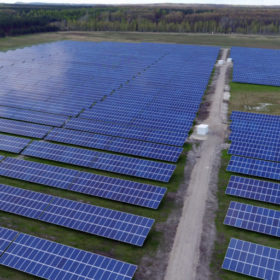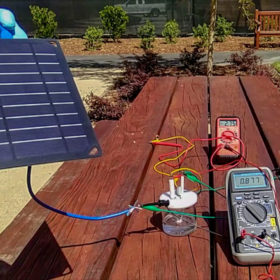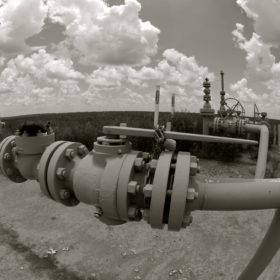A power-to-gas system integrating co-electrolysis and methanation
Researchers in Italy extensively analyzed four different configurations of their proposed system to assess its potential, including under non-optimal, ‘off-design’ conditions and concluded that, for now, subsidies would still be required for the commercial production of synthetic natural gas.
Germany will need 160 GW of solar by 2030 to prevent power shortages
EuPD Research has calculated what needs to be done to replace the nuclear and coal generation to be phased out in Germany. Accelerated expansion of PV appears the best short-term option. However, storage capacity will need to increase 30-fold by 2040 so solar can become the main pillar of the country’s energy system.
Why the EU needs binding targets for renewables and decarbonised gas for a climate-neutral Europe
Interview: The Energy Charts, developed by the Fraunhofer Institute for Solar Energy Systems (ISE) shows that the switch from coal to gas in Germany reduced CO2 emissions by one third in June. In a European wide transition, Eurogas General Secretary James Watson considers reductions of up to 45% possible by 2030. The gas sector is also willing to make the transition to renewables and decarbonised gases by the middle of the century. In the case of power-to-gas technologies, medium-term cost reductions which are comparable to the experience curve of photovoltaics is possible, Watson explained.
Water, water everywhere, nor any drop to… split?
Researchers at Stanford University have developed a type of electrode which is highly resistant to salt corrosion, therefore allowing them to produce hydrogen using seawater. Applied at a larger scale, this development could potentially cut the cost of power-to-gas applications by greatly increasing the amount of water available.
Power-to-gas crucial for solar-based energy system
In the Infrastructure Outlook 2050 study, Gasunie and TenneT say ambitious EU climate targets can only be reached through deeper integration of the power and gas infrastructure, and with power-to-gas technologies supporting renewables. The most bullish scenario for solar states how storage and power-to-hydrogen capacity could be crucial to meet seasonality in supply and demand.
The weekend read: From solar to gas
The opportunities for power-to-gas have long interested the solar community, but large-scale projects have been exceptionally rare. The outgoing CEO of SolarPower Europe, James Watson, has presided over a transformative period at the organization, and departed in January to head up Eurogas – right at the point the region’s solar sector is set for revival. Advancing a power-to-gas agenda, Watson tells pv magazine editor in chief Jonathan Gifford, will be a big part of his new challenge.
Power-to-X gains momentum on two fronts in Germany
Two power-to-gas projects promise to improve the technology. In Brandenburg, Edis and Gasag want to transform renewable power into hydrogen, driving sectoral coupling. And Sunfire has switched on its first co-electrolysis project.







